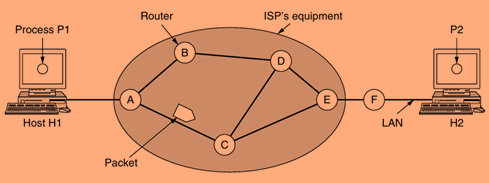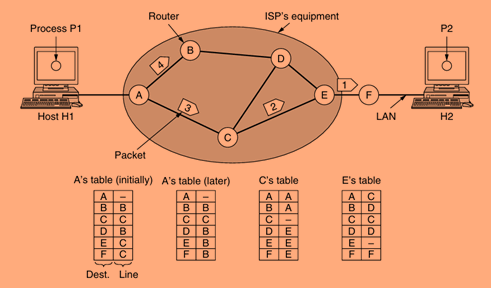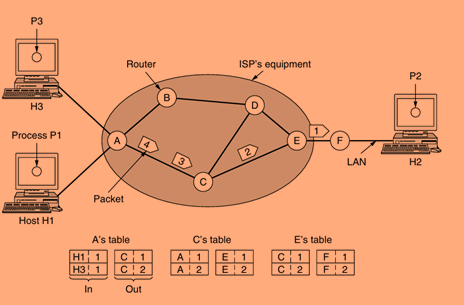Network Layer Design Issues
The design of the network layer is critical in ensuring efficient communication across a network. This layer is responsible for routing packets from the source host to the destination host, and it must address several key issues to provide effective service to the transport layer while managing the intricacies of the underlying network infrastructure.

1.Store-and-Forward Packet Switching
The network layer employs a store-and-forward packet switching mechanism. When a host transmits a packet, it is first sent to the nearest router, where it is stored until fully received and checked for errors. Once verified, the packet is forwarded to the next router along its path. This approach allows for the efficient handling of packets, as they can be processed independently and routed based on current network conditions.
2.Services Provided to the Transport Layer
The network layer must offer well-defined services to the transport layer, which include:
→ Independence from Router Technology: The services should remain agnostic to the specific technologies used by routers.
→ Shielding from Router Topology: The transport layer should not be affected by the number, type, or topology of routers in the network.
→ Uniform Addressing: A consistent addressing scheme should be available across both Local Area Networks (LANs) and Wide Area Networks (WANs).
These requirements lead to a debate over whether the network layer should provide a connection-oriented service or a connectionless service.
3.Connection-Oriented vs. Connectionless Service
The core of the design debate revolves around two opposing philosophies:
→ Connectionless Service: Advocated by the Internet community, this approach posits that routers should focus solely on moving packets. Each packet is treated independently, carrying its full destination address, and the network is viewed as inherently unreliable. Error detection and correction, as well as flow control, are handled at the transport layer, following the end-to-end argument principle.
→ Connection-Oriented Service: Supported by traditional telecommunication companies, this model emphasizes the importance of a reliable connection for quality of service, particularly for real-time applications like voice and video. This approach requires a setup phase to establish a path through the network before any data packets can be sent.
While connectionless protocols like IP have gained prominence, connection-oriented technologies such as MPLS (MultiProtocol Label Switching) are increasingly being integrated to provide quality of service and manage traffic effectively.
4.Implementation of Connectionless Service
In a datagram network, packets are routed independently without the need for a prior connection setup. Each packet is treated as a separate entity, with routers making forwarding decisions based on their routing tables. This independence allows for flexibility and resilience, as packets can take different paths to reach the destination.

5.Implementation of Connection-Oriented Service
Conversely, in a virtual-circuit network, a connection is established before data transmission begins. This setup involves selecting a route through the network, which is stored in the routing tables of the involved routers. Each packet carries a connection identifier, allowing routers to forward packets along the predetermined path. This method simplifies routing decisions at the cost of requiring state information in routers and a setup phase.

6.Comparison of Virtual-Circuit and Datagram Networks
The choice between virtual-circuit and datagram networks involves several trade-offs:
→ Circuit Setup: Virtual circuits require a setup phase, while datagram networks do not.
→ Addressing: Datagram networks use full source and destination addresses, whereas virtual circuits use shorter identifiers.
→ State Information: Virtual circuits require routers to maintain state information for each connection, while datagram networks do not.
→ Routing: In datagram networks, each packet is routed independently, while virtual circuits follow a predetermined path.
→ Quality of Service: Virtual circuits can more easily guarantee quality of service and manage congestion, as resources can be allocated in advance.
7.Vulnerability and Resilience
Virtual circuits are more vulnerable to router failures; if a router crashes, all virtual circuits passing through it are terminated. In contrast, datagram networks can continue to function, as only packets queued at the failed router are affected. This resilience is a significant advantage of connectionless networks, allowing for dynamic rerouting and load balancing.
Conclusion
The design of the network layer is a balancing act between flexibility, reliability, and efficiency. The ongoing debate between connection-oriented and connectionless services reflects the diverse needs of applications and the evolving landscape of networking technologies. As networks grow in complexity and demand for quality of service increases, the network layer’s design will continue to adapt and innovate to meet these challenges.
